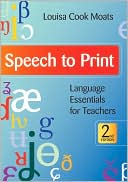Category Books
- Fiction Books & Literature
- Graphic Novels
- Horror
- Mystery & Crime
- Poetry
- Romance Books
- Science Fiction & Fantasy
- Thrillers
- Westerns
- Ages 0-2
- Ages 3-5
- Ages 6-8
- Ages 9-12
- Teens
- Children's Books
- African Americans
- Antiques & Collectibles
- Art, Architecture & Photography
- Bibles & Bible Studies
- Biography
- Business Books
- Christianity
- Computer Books & Technology Books
- Cookbooks, Food & Wine
- Crafts & Hobbies Books
- Education & Teaching
- Engineering
- Entertainment
- Foreign Languages
- Game Books
- Gay & Lesbian
- Health Books, Diet & Fitness Books
- History
- Home & Garden
- Humor Books
- Judaism & Judaica
- Law
- Medical Books
- New Age & Spirituality
- Nonfiction
- Parenting & Family
- Pets
- Philosophy
- Political Books & Current Events Books
- Psychology & Psychotherapy
- Reference
- Religion Books
- Science & Nature
- Self Improvement
- Sex & Relationships
- Social Sciences
- Sports & Adventure
- Study Guides & Test Prep
- Travel
- True Crime
- Weddings
- Women's Studies
Speech to Print: Language Essentials for Teachers: » (2nd Edition)

Authors: Louisa Cook Moats
ISBN-13: 9781598570502, ISBN-10: 1598570501
Format: Paperback
Publisher: Brookes, Paul H. Publishing Company
Date Published: July 2010
Edition: 2nd Edition
Author Biography: Louisa Cook Moats
Book Synopsis
One of the most popular and influential reading textbooks of the past 10 years gets a comprehensive update in this highly anticipated second edition, straight from renowned NCTQ-recommended expert Louisa Moats. Updated meticulously with the very latest research, the new edition of this bestselling text helps elementary educators grasp the structure of written and spoken English, understand how children learn to read, and apply this foundational knowledge as they deliver explicit, high-quality literacy instruction.
With extensive updates and enhancements to every chapter, the new edition of Speech to Print fully prepares today's literacy educators to teach students with or without disabilities. Teachers will get
- in-depth explanation of how the book aligns with the findings of current scientific research on reading, language, and spelling
- expanded information on the critical elements of language, including orthography, morphology, phonetics, phonology, semantics, and syntax
- new and improved exercises teachers can use to test and reinforce their own knowledge of language content
- teaching activities that help teachers connect what they learn in their coursework with what they'll be doing in the classroom
- new chapter objectives that make it easier to plan courses and review key concepts
- more samples of student writing to help teachers correctly interpret children's mistakes
- expanded sample lesson plans that incorporate the language concepts in the book
- a cleaner, easier-to-navigate layout
A core textbook for every preservice course on reading instruction, this accessible text is also perfect for use in inservice professional development sessions. Educators will have the knowledge they need to recognize, understand, and resolve their students' reading and writing challenges—and improve literacy outcomes for their entire class.
Table of Contents
About the Author xi
Acknowledgments xiii
Chapter 1 Why Study Language? 1
The Missing Foundation in Teacher Education 2
Language and Literacy 2
The Development and Complexity of Language 4
Reading Is Difficult for Many People 5
A Research Consensus About Language and Reading 6
How Reading and Spelling Develop 11
Skillful Teaching Prevents Most Reading Problems 15
Teaching Reading Is Complex and Challenging 15
Principles of Effective Teaching of Reading, Spelling, and Writing 16
Brief Survey of Language Knowledge 20
Comprehensive Survey of Language Knowledge 22
Chapter 2 Phonetics: The Sounds in Speech 25
Why Start with Speech Sounds? 26
Becoming Multilinguistic 26
Counting Phonemes 27
Why Phonemes Are Elusive 27
Speech Sound Identification 29
Phonetic Transcription 30
Summary 43
Chapter 3 Phonology: Speech Sounds in Use 47
Sequences, Syllables, and Stress 49
Aspects of Phonological Processing 54
Phonemes and Minimal Pairs 59
Phonetic Variation and Allophones 60
Systematic Variation in Speech Sound Production 62
Teaching Phonological Awareness-General Principles 70
Sample Activities for Preschool or Beginning Kindergarten Level 70
Sample Activities for First-Grade and Older Students 72
Summary 75
Chapter 4 The Structure of English Orthography 79
A Brief History of Writing 80
Meaning and Sound 82
Anglo-Saxon, Latin, and Greek Layers in English Orthography 83
Phoneme-Grapheme Correspondences in English 91
Orthographic Conventions 102
Summary 111
Chapter 5 Morphology 117
Why Morphology Is Important for Reading and Spelling 118
Morphemes: The Smallest Meaningful Units 119
Individual Differences in Using Derivational Morphology 139
Derivational Morphology: Principles of Instruction 141
Classroom Activities 146
Chapter 6 Syntax: How Sentences Work 153
Correct or Incorrect Syntax? 154
Natural Knowledge of Syntax 155
Evidence for Syntactic Structures 157
Parts of Sentences 158
How Sentences Grow 165
Transformations 167
Teaching Sentence Structure 169
Summary 171
Chapter 7 Semantics: Word and Phrase Meanings 175
Aspects of Word Meaning 176
Phrase and Sentence Meaning 184
Noun Phrases 185
Pragmatics: Making Sense in Context 190
Reference in Discourse 191
Teaching Vocabulary and Other Aspects of Meaning 192
Summary 194
Chapter 8 Language and Reading Instruction 199
The Prealphabetic Learner 201
Early Alphabetic to Later Alphabetic Phases (Ages 5-7) 203
A Spelling-Decoding Continuum for Elementary Instruction 209
Example Lesson 1: Introducing Letter-Sound Correspondence to a Novice Reader 211
Example Lesson 2: Working with Suffixes 213
Example Lesson 3: Oral Reading for Fluency 214
Case Studies 215
Summary: The Power of Instruction 222
References 223
Appendix A Developmental Spelling Inventories 233
Directions for Administering the Spelling Inventories 233
Primary Spelling Inventory-Individual Score Sheet 236
Elementary Spelling Inventory-Individual Score Sheet 238
Appendix B Answer Key 241
Appendix C Glossary 271
Index 283
Subjects
 Educational Levels & Settings
Educational Levels & Settings  Elementary Education
Elementary EducationEducation & Teaching
 Teaching Reading & Language
Teaching Reading & Language  Teaching - Language Arts
Teaching - Language ArtsEducation & Teaching
 Teaching & Teacher Training
Teaching & Teacher Training  Teaching - Teacher Training
Teaching - Teacher Training
